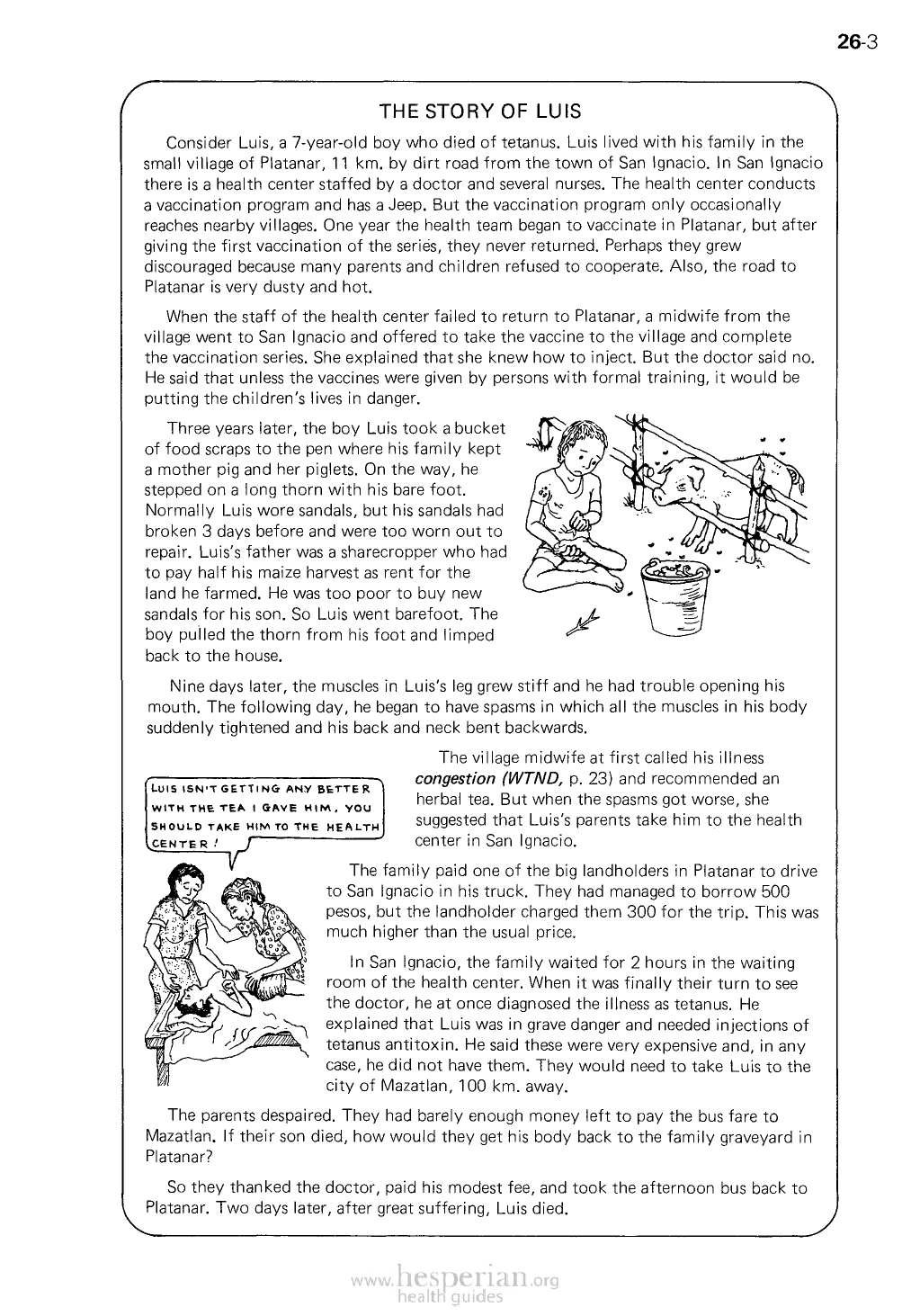
26-3
THE STORY OF LUIS
Consider Luis, a 7-year-old boy who died of tetanus. Luis lived with his family in
the small village of Platanar, 11 km. by dirt road from the town of San Ignacio. In San
Ignacio there is a health center staffed by a doctor and several nurses. The health center
conducts a vaccination program and has a Jeep. But the vaccination program only
occasionally reaches nearby villages. One year the health team began to vaccinate in
Platanar. but after giving the first vaccination of the series, they never returned. Perhaps
they grew discouraged because many parents and children refused to cooperate. Also,
the road to Platanar is very dusty and hot.
When the staff of the health center failed to return to Platanar, a midwife from the
village went to San Ignacio and offered to take the vaccine to the village and complete
the vaccination series. She explained that she knew how to inject But the doctor said
no. He said that unless the vaccines were given by persons with formal training, it
would be putting the children’s lives in danger.
Three years later, the boy Luis took a bucket
of food scraps to the pen where his family
kept a mother pig and her piglets. On the way.
he stepped on a long thorn with his bare foot.
Normally Luis wore sandals, but his sandals
had broken 3 days before and were too worn
out to repair. Luis’s father was a sharecropper
who had to pay half his maize harvest as rent
for the land he farmed. He was too poor to
buy new sandals for his son. So Luis went
barefoot. The boy pulled the thorn from his
foot and limped back to the house.
Nine days later, the muscles in Luis’s leg grew stiff and he had trouble opening his
mouth. The following day, he began to have spasms in which all the muscles in his body
suddenly tightened and his back and neck bent backwards.
The village midwife at first called his illness
congestion (WTND, p. 23) and recommended an
herbal tea. But when the spasms got worse, she
suggested that Luis’s parents take him to the health
center in San Ignacio.
The family paid one of the big landholders in Platanar to drive
to San Ignacto in his truck. They had managed to borrow 500
pesos, but the landholder charged them 300 for the trip. This
was much higher than the usual price.
In San Ignacio, the family waited for 2 hours in the waiting
room of the health center. When it was finally their turn to see
the doctor, he at once diagnosed the illness as tetanus. He
explained that Luis was in grave danger and needed injections of
tetanus antitoxin. He said these were very expensive and, in any
case, he did not have them. They would need to take Luis to the
city of Mazatlan, 100 km. away.
The parents despaired. They had barely enough money left to pay the bus fare to
Mazatlan. If their son died, how would they get his body back to the family graveyard in
Platanar?
So they thanked the doctor, paid his modest fee. and took the afternoon bus back to
Platanar. Two days later, after great suffering, Luis died.